Bulletin! Cryptozoology Is Being Used By Scientists
Posted by: Loren Coleman on October 29th, 2009
We all heard about the new species of that bald-headed bird, oh, so innocently found recently. Now here’s the rest of the story, the confirmation of the cryptozoological method, indeed, quietly happening in what is sometimes called EdgeScience.
This bald-headed, pink-faced songbird was “accidentally found” (according to the media) by scientists who were surveying a limestone outcrop in Laos. But was there more to all of this than means the eye? Photo: Iain Woxvold, University of Melbourne.
J.W. Duckworth is one of the members of the team who discovered the bare-faced bulbul. Photo: I. Woxwold.
For editor Patrick Huyghe’s feature on this bird in a daring, just published new journal, EdgeScience, he asked the discoverer Iain Woxvold this question:
“I see that you basically stumbled across the bird while doing a survey. Do you ever follow up native reports of creatures that might be new to science?”
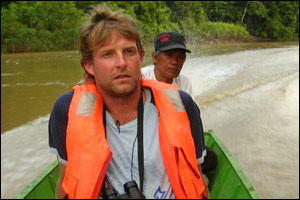
Iain Woxvold, one of the discoverers of the bare-faced bulbul (Pycnonotus hualon) in Laos. Photo: J. W. Duckworth.
Woxvold’s reply was:
When in the field we typically use a rapid assessment protocol which, by definition, leaves us with little time to TRY and census complete faunal communities! To help us with some of the more cryptic species, yes indeed, we do rely rather heavily on the extensive knowledge of local hunters; when it comes to taxa that are used for food or decoration, these guys really are the experts out there! And every once in a while you come across someone who has a real naturalist’s streak in them, and is able to correctly identify species from pages of similar-looking creatures in a field guide – no mean feat. Unfortunately, in many cases it’s very difficult for the average hunter to know what the salient features are that, for wildlife scientists, distinguish a particular animal from seemingly similar species. As a result, mistakes are often made regarding relatively common species and require careful interpretation by interviewers. Under these circumstances it would be a pretty special case in which a hunter’s description would stir researchers into action to search for a new species. On the other hand, many hunters keep ‘trophies’ of their quarry, and viewing animal parts is an excellent way to assess the presence of something truly unusual; the Saola, recently discovered in Indochina in the Annamite range near the border of Laos and Vietnam, is a very interesting case in point.
Patrick Huyghe’s actual (crypto)zoology feature in EdgeScience is entitled, “Surely there’s nothing left to discover.”
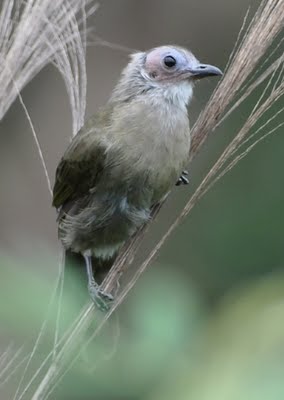
“Don’t tell that to Iain Woxvold, a zoologist at the University of Melborne, though he hears those words from his friends all too often.
“Woxwold, along with scientists from the Wildlife Conservation Society, discovered a songbird à la Yul Brenner last December while conducting a survey at Pha Lom, a limestone outcrop in Laos. The find, just announced in the latest issue of Forktail, is a bald-headed songbird with a pink, nearly featherless face and distinctive calls. The bald-headed bulbul, which has been named Pycnonotus hualon (‘hualon’ being the Lao word for ‘bald-headed’), is a thrush-sized bird with a greenish-olive body, light-colored breast, and bluish skin from its eyes to its bill.
“What so special about this new songbird discovery, you ask?
“For one thing, it’s the first new Asian species of bulbul described in more than a century. Even more remarkable, it’s the only known bald songbird in Asia.
“Pycnonotus hualon represents the tip of the proverbial unknown. Scientists estimate that at least half of the world’s species remain to be discovered, which means there are at least 1.5 million species left to be discovered.
“‘Nothing left to discover’ are words ‘never uttered among members of the biodiversity teams I have the privilege of working with,” notes Woxwold. ‘In New Guinea, Borneo and Indochina I’ve worked with herpetologists, mammalogists and botanists who have discovered, between them, literally hundreds of new species, including a number of frogs, lizards, rats, bats, trees and ferns. New birds are much harder to come by, so the bulbul was definitely an unexpected treat. Very exciting.’ —PH”
Watch EdgeScience for more thought-provoking science features in the coming months.
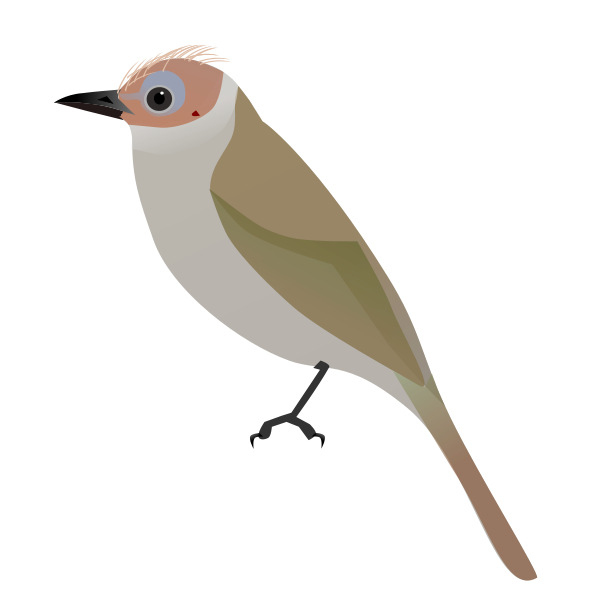
About Loren Coleman
Loren Coleman is one of the world’s leading cryptozoologists, some say “the” leading living cryptozoologist. Certainly, he is acknowledged as the current living American researcher and writer who has most popularized cryptozoology in the late 20th and early 21st centuries.
Starting his fieldwork and investigations in 1960, after traveling and trekking extensively in pursuit of cryptozoological mysteries, Coleman began writing to share his experiences in 1969. An honorary member of Ivan T. Sanderson’s Society for the Investigation of the Unexplained in the 1970s, Coleman has been bestowed with similar honorary memberships of the North Idaho College Cryptozoology Club in 1983, and in subsequent years, that of the British Columbia Scientific Cryptozoology Club, CryptoSafari International, and other international organizations. He was also a Life Member and Benefactor of the International Society of Cryptozoology (now-defunct).
Loren Coleman’s daily blog, as a member of the Cryptomundo Team, served as an ongoing avenue of communication for the ever-growing body of cryptozoo news from 2005 through 2013. He returned as an infrequent contributor beginning Halloween week of 2015.
Coleman is the founder in 2003, and current director of the International Cryptozoology Museum in Portland, Maine.

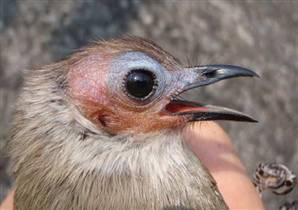
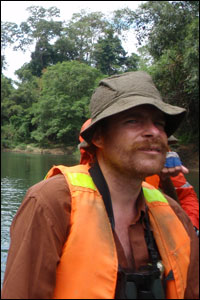










A Fascinating Magazine! Get it! Read it!
The methods he described seems so…common sense to me. Ask the people who live around there. True, their names for them may be different or non-existent, but the natives at least will recognize the wildlife, either with an example or pictures. I will admit, I’d hate to be the interpretive artist tagging along. It would remind me of the I Love Lucy episode when she gets arrested in France for counterfeit bills. For those who haven’t seen it, they had a chain of people starting with the head officer asking the arresting officer the questions, he had to translate to dutch (or something like that), that person then translated into spanish so Ricky could then ask Lucy the questions. It could be funny…for the ones outside the conversation.
Cool. “Nothing left to discover,” indeed. Great magazaine.